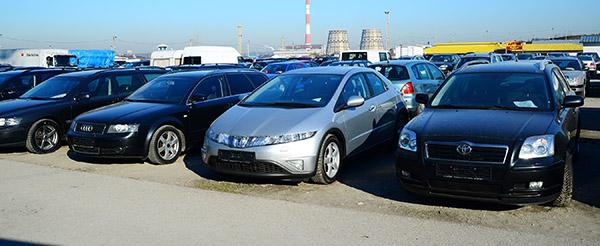Based on a Volvo Co-Pilot report, one in three employees will have a collision during the next 12 months when travelling for work. The nation's grey fleet comprises 14 million cars, equating to 40 per cent of all vehicles on the road.

The grey fleet can be simply defined as any vehicle that is used by an employee for making a work-related journey. The vehicle doesn’t have to be owned by the company, it can be a vehicle purchased via an employee ownership scheme, privately rented or owned by an employee.
When they are driven on company business, often in return for a cash allowance or fuel expense, these vehicles are considered part of the ‘grey fleet’ – and as such fall under the responsibility of the employer and the Health and Safety at Work Act. This means the employer has a duty of care to ensure, so far as is reasonably practicable, the health and safety of all employees while at work and not put others at risk during any work-related driving activities. Whilst the chances of any investigation and prosecution may be low, the potential consequences to a business, in terms of large fines and reputational damage, are very serious. It’s essential that there’s a robust policy and strong audit trail in place to manage all work related vehicles, including the grey fleet.
Any process should cover the following areas:
The Driver
The driver arguably has the most influence over whether they are going to be involved in a collision so any measures for improving driver safety should include both company vehicles and the grey fleet. Fitness to drive is one of the key areas that need managing, which will include areas such as health, fatigue, eyesight and alcohol/drug (medicines and recreational) use.
Licence and insurance
Checks should be in place to confirm licence and insurance validity, preferably checking higher risk drivers with greater frequency.
The Journey
Fatigue is the biggest issue here and should be addressed for all company drivers.
The Vehicle
This may include the suitability of the vehicle for work purposes including the age and condition, whether the vehicle is equipped with ABS, ESP, air conditioning, and whether or not it is suitable for the journey requirements of the company.
Whatever vehicle specification is agreed on for grey fleet employees, it is vital that they are maintained to a minimum standard. In addition to checking maintenance records and MOT certificates on a regular bases (at least annually), there should be a routine maintenance procedure. It is important that drivers regularly carry out their basic checks: fuel, water and oil levels, coolant and wash bottle, primary light electrics, tyres and windscreen wipers. A documented procedure and audit trail is good practice.
A report by Lex Autolease found that 56% of fleet managers never physically check grey fleet vehicles. Additionally, 13% never check insurance, 18% never check licences, and 27% never check if the vehicle has an MOT. This, of course, means that employees can be endangering not just their own life, but the lives of other road users – all whilst on company business.
Russell Barnard, SG World Product Manager commented “SG World offer a wide range of practical vehicle check and risk assessment products, however we always recommend they are used in tandem with an inclusive driving safety culture.”